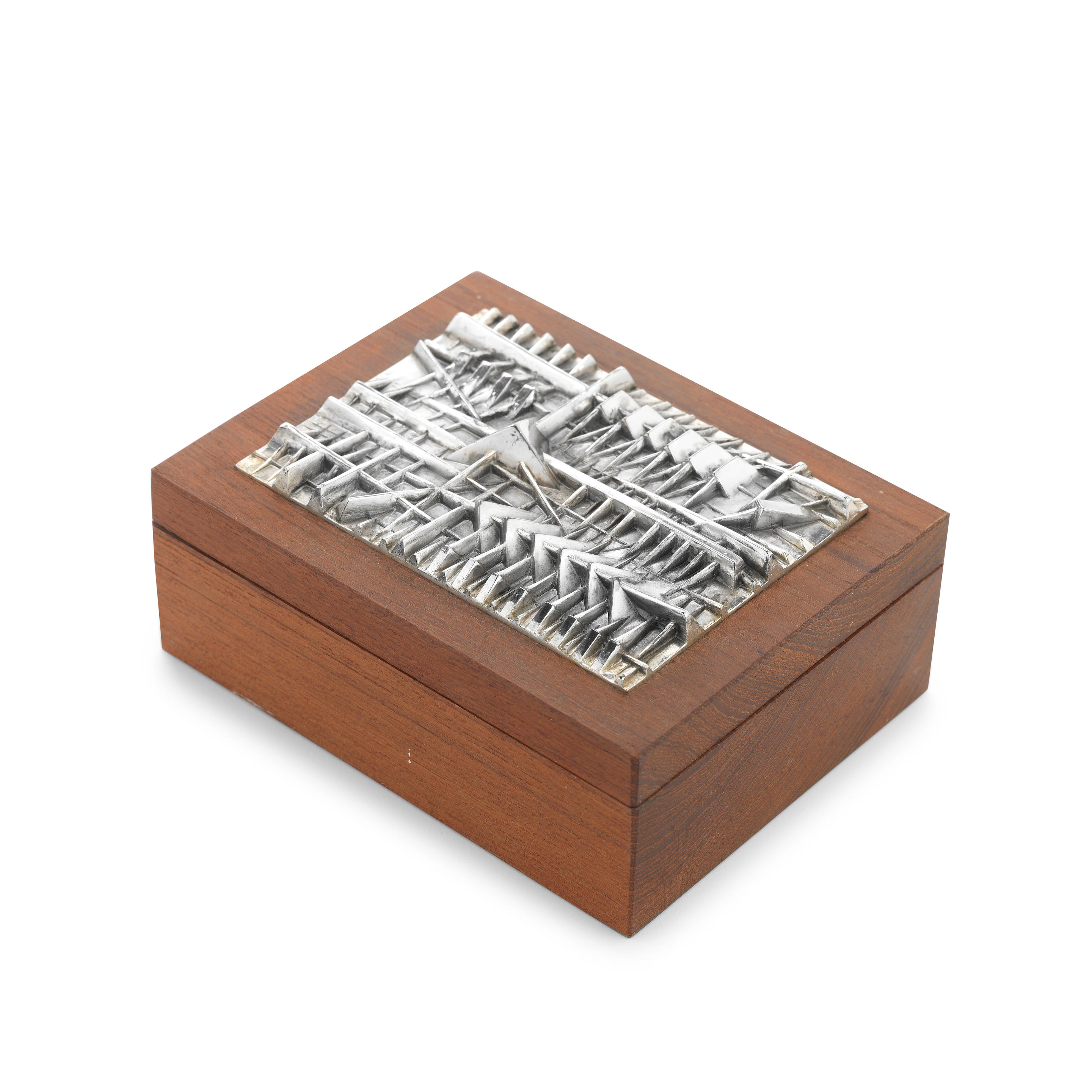Arnaldo Pomodoro (Italian, b. 1926) Rotante primo sezionale n. 1 [Rotating First Section No. 1], 1966 Incised signature and number "Arnaldo Pomodoro -02 p.a." on the plinth l.r., incised title and date "...1966-" on the plinth l.l. Bronze, 31 1/2 in. (80.0 cm) diameter, set on a cast acrylic plinth. Condition: Minor surface abrasions to bronze and acrylic surfaces. Provenance: Purchased from Marlborough Galleria d'Arte, Rome; collection of Melvin B. Nessel, Boston, Massachusetts. Literature: Flaminio Gualdoni and Arnaldo Pomodoro Arnaldo Pomodoro Catalogo ragionato della scultura, Milan: Skira, 2007, p. 524, no. 396 (illustrated); Sam Hunter Arnaldo Pomodoro New York: Abbeville Press, 1982, no. 76 (final edition illustrated). N.B. The present work is one of two artist proofs outside the edition of two, and is registered with the Archivio Arnaldo Pomodoro Milan, Italy, as AP 263. We wish to thank the Arnaldo Pomodoro Studio for their assistance with cataloguing the lot. Pomodoro began his experiments with "sculpture in the round" in the mid-1950s, moving away from his carved bas-relief "tablets" toward penetrable, free-standing geometric volumes. This development for Pomodoro was less a result of technical innovation than it was a search for "a more dialectical process of both constructing and destroying geometric forms."(1) Pomodoro considered his bas-relief carving to represent a form of abstract "writing," and his search into the limit of this kind of symbolic representation resulted in experiments with depth and surface. By 1963, Pomodoro created his first sphere, which allowed him to express his "glyphs" in terms of an interior and exterior dynamic. Inspired by Brancusi's use of polished surfaces to unify a form, Pomodoro appropriated the highly polished exterior to underscore the sphere's built-up and torn-down interior-and thus its disintegration of form. As in the present work, plaster debris from the casting process left deliberately on the interior points to its own genesis, and yet, its crumbling texture alludes to its demise. Pomodoro saw his "surface erosions and irregularities as symbols of the destructive impulse" in a technological age where the "drama of erosion captures the sense of foreboding, of a certain anxiety about the course of events at that time in our history." (2) 1) Hunter, Sam. Pomodoro. New York: Abbeville Press, 1982. Pg. 194. 2) Ibid, 52, 57
Arnaldo Pomodoro (Italian, b. 1926) Rotante primo sezionale n. 1 [Rotating First Section No. 1], 1966 Incised signature and number "Arnaldo Pomodoro -02 p.a." on the plinth l.r., incised title and date "...1966-" on the plinth l.l. Bronze, 31 1/2 in. (80.0 cm) diameter, set on a cast acrylic plinth. Condition: Minor surface abrasions to bronze and acrylic surfaces. Provenance: Purchased from Marlborough Galleria d'Arte, Rome; collection of Melvin B. Nessel, Boston, Massachusetts. Literature: Flaminio Gualdoni and Arnaldo Pomodoro Arnaldo Pomodoro Catalogo ragionato della scultura, Milan: Skira, 2007, p. 524, no. 396 (illustrated); Sam Hunter Arnaldo Pomodoro New York: Abbeville Press, 1982, no. 76 (final edition illustrated). N.B. The present work is one of two artist proofs outside the edition of two, and is registered with the Archivio Arnaldo Pomodoro Milan, Italy, as AP 263. We wish to thank the Arnaldo Pomodoro Studio for their assistance with cataloguing the lot. Pomodoro began his experiments with "sculpture in the round" in the mid-1950s, moving away from his carved bas-relief "tablets" toward penetrable, free-standing geometric volumes. This development for Pomodoro was less a result of technical innovation than it was a search for "a more dialectical process of both constructing and destroying geometric forms."(1) Pomodoro considered his bas-relief carving to represent a form of abstract "writing," and his search into the limit of this kind of symbolic representation resulted in experiments with depth and surface. By 1963, Pomodoro created his first sphere, which allowed him to express his "glyphs" in terms of an interior and exterior dynamic. Inspired by Brancusi's use of polished surfaces to unify a form, Pomodoro appropriated the highly polished exterior to underscore the sphere's built-up and torn-down interior-and thus its disintegration of form. As in the present work, plaster debris from the casting process left deliberately on the interior points to its own genesis, and yet, its crumbling texture alludes to its demise. Pomodoro saw his "surface erosions and irregularities as symbols of the destructive impulse" in a technological age where the "drama of erosion captures the sense of foreboding, of a certain anxiety about the course of events at that time in our history." (2) 1) Hunter, Sam. Pomodoro. New York: Abbeville Press, 1982. Pg. 194. 2) Ibid, 52, 57















Testen Sie LotSearch und seine Premium-Features 7 Tage - ohne Kosten!
Lassen Sie sich automatisch über neue Objekte in kommenden Auktionen benachrichtigen.
Suchauftrag anlegen